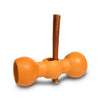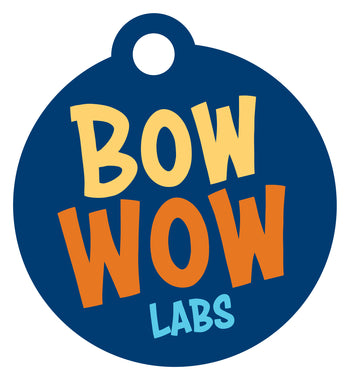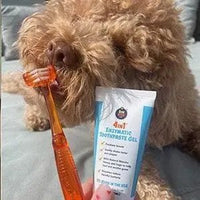I walk my dogs twice a day, but no two walks are ever the same.
I say this not because the environment is always changing, or because the weather or location is different, but because I choose to have two different types of walks with my dogs.
Not all dog walks need to be focused exclusively on exercise. Incorporating a second, less-rigorous walk can offer your dog much-needed mental stimulation.
If you are able to walk your dog twice a day, I hope that after reading how my two walks are different, you will be encouraged to think differently about yours.
(And remember—even two fifteen-minute walks incorporating what I’m about to share can be better than one 30-minute walk!)

First, Establish Good Walking Behavior
Before we dive into the different types of leashed walks, let’s review some dog-walking basics. At no time on any walk should you ever let your dog pull you all over the road or path. If your dog is doing this, I would encourage you to first practice loose-leash walking skills . If you’ve already done this and you still have issues with pulling, it might be time to get a good no-pull type of harness to help make your walks more enjoyable for both you and your dog.

Mentally Stimulating Walks
I use the first walk of the day as a way to help wake my dog’s bodies — to get the synovial fluid moving and circulating throughout their joints and to engage their brain.
This walk is slower in cadence and is less about tiring my dogs out physically and more about tiring them mentally. Mental stimulation fatigues both the brain and body, and walks that engage your dog’s brain can be a great tool if you have a full day of work at home or if they will be left alone all day.
But how does a more leisurely walk translate into a walk that mentally stimulates them? The answer is: You let your dog SMELL on this kind of walk.
Dogs have a sense of smell that can detect odor more than 10,000 to 100,000 times that of the average human. But how does this tire them? Well, the canine brain that is devoted to analyzing smell is — proportionately speaking — 40 times greater than that of us humans. That means when your dog is sniffing all those scents, he is using a good portion of his brain to detect, analyze, and interpret what each means. The thought alone is tiring!
And you will see that after you allow your dog to smell her surroundings that she will be ready for a nap!
Mind you, we aren’t talking about moving 1,000 feet over the course of 20 minutes. Rather, think about covering approximately a half-mile in ten minutes with moderate sniffing and then bouts of straight walking in-between.

Physically stimulating walks
The second walk of the day is geared toward strengthening and tiring the muscles in the body. On this type of walk, we are looking for minimal sniffing and minimal marking. The point of this walk is to keep moving (while allowing your pup to defecate and urinate, of course.)
Again, it’s not necessarily about pace—you may naturally walk slower than your dog, especially if you have a large breed, but it’s about consistency. Make sure your dog is moving in stride with yours -- no pulling or dragging. This is also a great time to work on loose-leash walking and check-ins -- so bring treats. Technically this type of walk is also going to offer some mental stimulation, if done properly, but that’s not the focus of this kind of walk, like the first we discussed.
While each dog breed is different, most experts recommend that dogs need at least 30 minutes of exercise (at minimum) each day, and more is better if you can!
But here’s the thing: Not everyone can find time to take their dogs on two walks a day. If this is you, don’t worry! If you can’t take two walks in a day, switch it up and rotate between walks focused on mental versus physical stimulation on alternating days. Or, try adding a second walk on the weekends. You and your dog will both be happier for it.
Johnna Devereaux is a Clinical Pet Nutritionist and canine wellness expert. She is the Director of Nutrition and Wellness for Bow Wow Labs and sits on their Board of Advisors.
The points of view expressed above are those of our clinical nutritionist and supported by science, her education and experience. However, we recognize there may be different points of view or opinions on some aspect or even the premise of this article. Our goal at Bow Wow Labs is to provide the best, clearest, and most helpful information possible to help keep your dog happy, healthy and safe.
Related Resources
You Might Also Like:
How Journaling Has Changed My Dog’s Health















